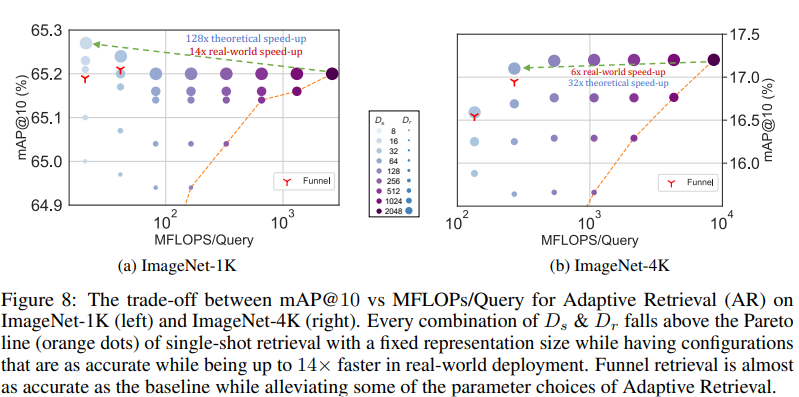Matryoshka Representation Learning
Introduction
- Learned representations are utilized in various downstream applications.
- Today these represntations are rigid
- we are forced to use the same high dimensional embedding vector across multiple tasks.
- different tasks might have different resource/accuracy constraints.
- At the same time, deep learning models today tend to diffuse information across the entire vector.
- Not honouring the coarse-to-fine granularity of human perception.
- Current methods to solve this problem:
- Training multiple low dimensional models.
- Jointly optimize subnetworks of varying capacity.
- post-hoc compression.
- Issues with these methods:
- Training/Maintenance overhead.
- Numerous expensive forward passes.
- Significant drop in accuracy.
- Matryoshka Represenation Learning (MRL) learns representation of various capacities within same high dimensional vector.
Implementation
-
Following implementation is for fully supervised representation learning via multi class classification.
-
For \(d \ \epsilon \ N\), consider a set \(M \subset [d]\) of representation sizes.
-
For a datapoint \(x\) in the input domain \(X\), our goal is to learn a d-dimensional representation vector \(z \ \epsilon \ R^d\).
-
For every \(m \ \epsilon \ M\), MRL enables each of the first m dimensions of embedding vector, \(z_{1:m} \ \epsilon \ R^m\) to be independently capable of being a transferrable and general purpose representation of the data point.
-
Usually \(M\) consists of halving until representation size hits a low dimenstional bottleneck.
-
Suppose we are given a labelled dataset: \(D= \{(x_1,y_1),...,(x_N,y_N)\) where \(x_i \ \epsilon \ X\) is an input point and \(y_i \ \epsilon \ [L]\) is the corresponding label.
-
MRL optimizes the following mult-class classification loss:
\({_{\{W^{(m)}\}_{m \ \epsilon \ M }, \theta_F}}^{min} \frac{1}{N} \sum_{i \ \epsilon \ [N]}\sum_{m \ \epsilon \ M}c_m. L(W^{(m)}.F(x_i;\theta_F)_{1:m};y_i)\) where
- \(L: R^L \times [L] \mapsto R_+\)
is the multi-class softmax cross-entropy loss function.
- can be solved using sub-gradient descent methods.
- \(W^{(m)} \ \epsilon \ R^{L \times m}\) is a linear classifier
- \(F(.;\theta_F): X \mapsto R^d\) is the neural network.
- \(\theta_F\) is used to parametrize learnable weights of the neural network.
- \((c_m \ge 0)_{m \ \epsilon \ M}\) is for relative importance of losses (all set to 1).
- \(L: R^L \times [L] \mapsto R_+\)
is the multi-class softmax cross-entropy loss function.
-
Can be made efficient through weight tying: \(W^{(m)} = W_{1:m}\)
- Known as Efficient Matryoshka Representation Learning (MRL-E).
Applications
Classification
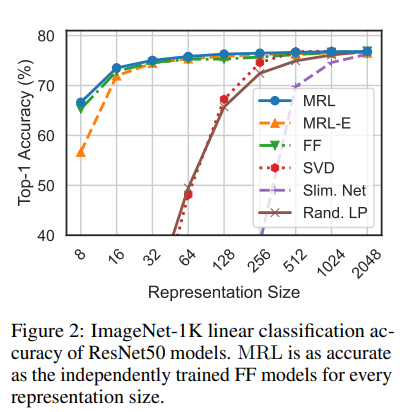
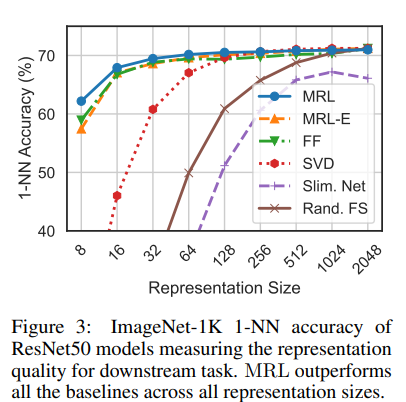
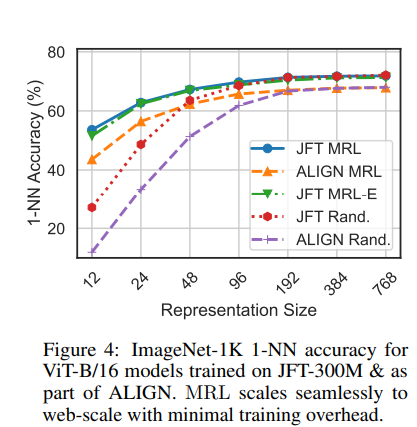
Adaptive Classification
- Coarse to fine granularity of the representation allows model cascades for Adaptive Classification.
- Learn thresholds on max softmax probability for each nested classfifier on a holdout validation set.
-
Use these thresholds to decide when to transition to higher dimensional representation.
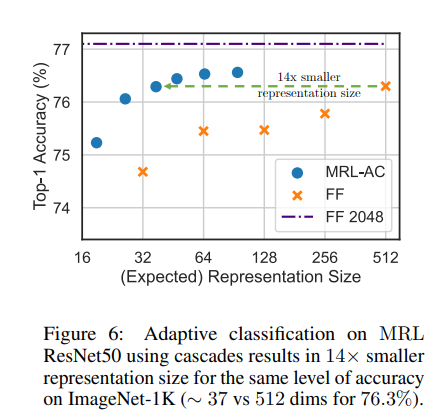
Retrieval
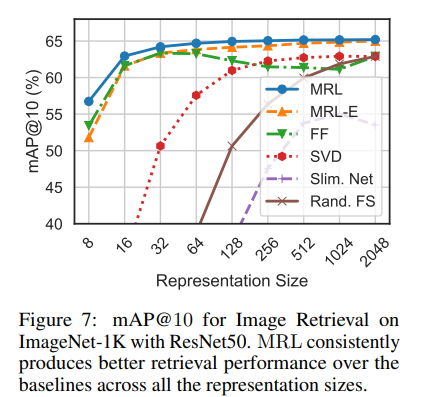
Adaptive Rretrieval
- For a given query, shortlist K docs using lower dimensional representation, \(D_r\).
- Followed by re-ranking with higher capacity representation, \(D_s\).
- Funnel Retrieval:
- Thins out initial shortlist by repeated re-ranking and shortlisting with a series of increasing capacity representation.
